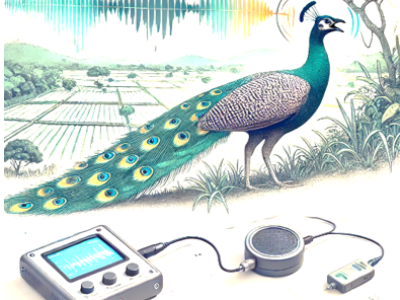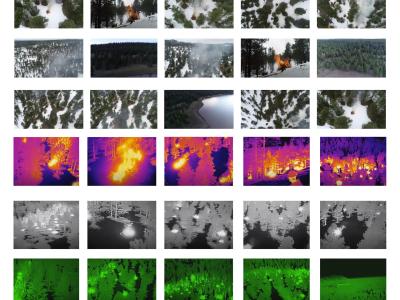PeaDetect

- Citation Author(s):
- Submitted by:
- Rukshani Puvanendran
- Last updated:
- DOI:
- 10.21227/nqaq-w629
 10 views
10 views
- Categories:
- Keywords:
Abstract
This dataset was curated mainly to cater to mitigation strategies for the Human-Peafowl Conflict that exists in these regions. The absence of natural predators has contributed to a significant increase in the peafowl population, exacerbating challenges for farmers. Peafowls are sometimes considered agricultural pests due to their tendency to feed on and damage crops. The vocalizations are from the Indian Peafowl (Pavo cristatus), a species native to the Indian subcontinent and especially abundant in India and Sri Lanka. Peafowl belong to the genus Pavo in the family Phasianidae. "Peafowl" refers to both males (peacocks) and females (peahens).
The Indian Peafowl thrives in dry lowland forests, scrublands, and agricultural areas. Males are renowned for their iridescent blue and green plumage, while females display more subdued brownish feathers for camouflage.
The main aim of this dataset is to automate the detection of the presence of peafowl using their vocalizations. Their distinct vocalizations serve as a reliable indicator of their presence.
Instructions:
Instructions for Use
This section explains how to use the PeaDetect_Dataset_19.04 dataset and provides guidance on applying basic analysis tools for presence/absence detection of peafowl vocalizations.
1. Accessing the Dataset
- Download and unzip the /PeaDetect_Dataset_19.04/ archive.
- Familiarize yourself with the folder structure (Presence, Absence, metadata, train/test data).
- Use metadata/metadata.csv to match audio files with their labels (presence = 1, absence = 0).
- The dataset is already pre-divided to train and validate machine learning models without needing to split manually.
- /train_test_data/Train Set/
- /train_test_data/Test Set/
If you use this dataset in your research, please cite it as:
- [Rukshani Puvanendran], "[PeaDetect]," IEEE DataPort, [2025]. DOI: [10.21227/nqaq-w629]







